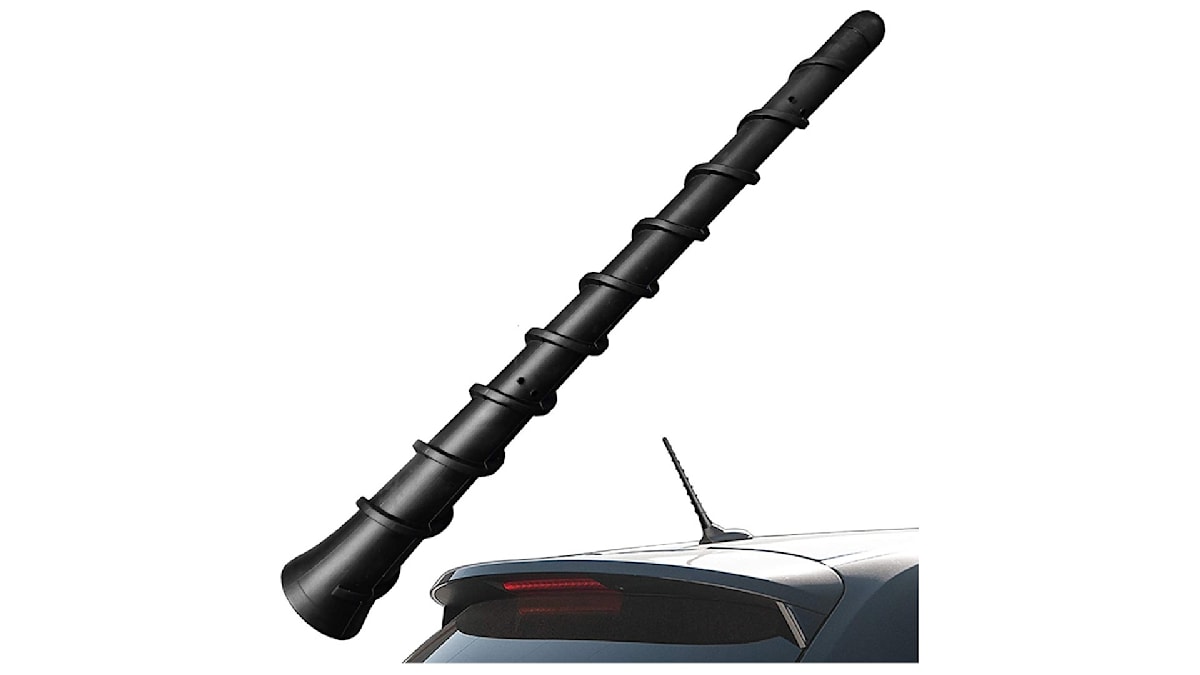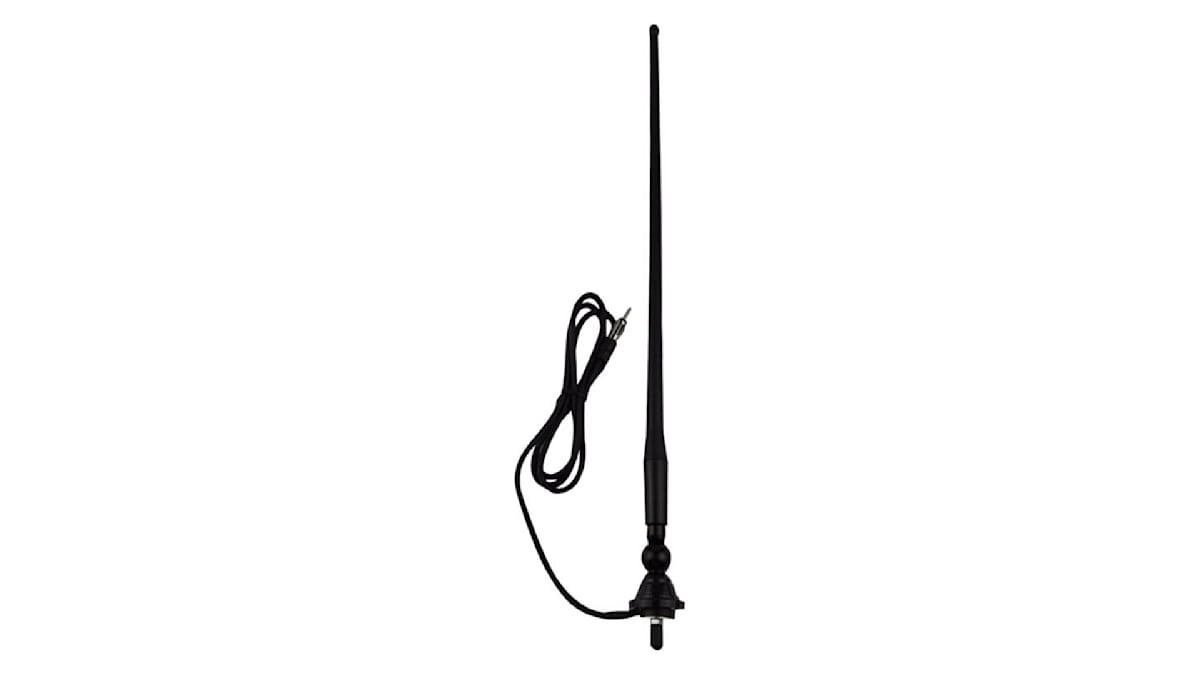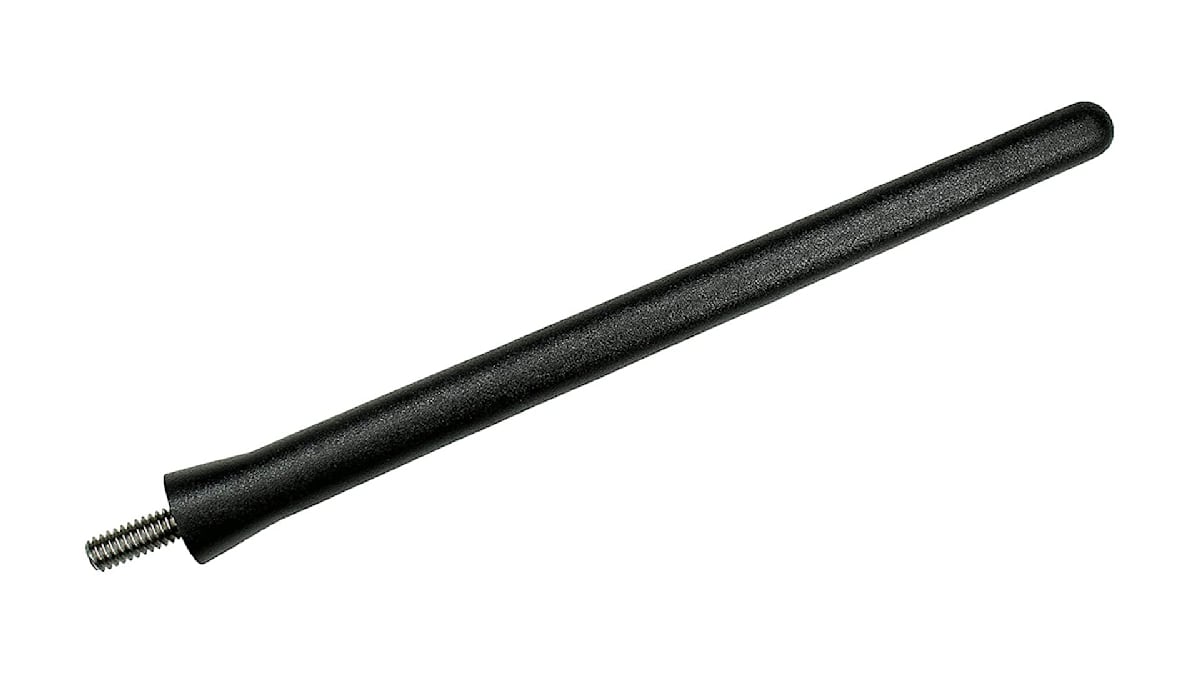Listen to the radio wherever you go with these top of the line car antennas

Autoblog is not affiliated with the brands featured in our articles, but when you make a purchase through links on our site we may earn a commission.
Even with music streaming services, many people still enjoy a good radio show. Tune in from your vehicle with these powerful and durable car antennas. Radio was a global phenomenon decades ago. Anyone could listen to the most popular songs, learn the latest news and even follow the play-by-play of their favorite sports team in real-time. These days, though, with more ways to enjoy ourselves than ever before, not many people retain an interest in radio.
But this doesn’t mean radio is obsolete, and many people still enjoy tuning in to their favorite station. Thanks to most cars’ built-in radio, you’re able to tune in anywhere you drive. These radio antennas are a great way to stay connected, so whether you’re on your way to the grocery store or picking up the kids from school, there will always be something to listen to.
Top car antennas of 2022 reviewed in detail
AntennaMastsRus 6 3/4-inch Antenna: Our pick
Buy on Amazon
If you’re looking for an antenna that matches the color of your vehicle, then look no further– this antenna by AntennaMastsRus is a classic antenna design with a modern touch. It’s not as large as older antennas, and it can stand on top of your vehicle without obstructing your view too much. An interesting thing about this antenna is the fact that it comes in eight different colors, ranging from black and silver to more colorful options, among them blue, yellow, and green. The colors may not always perfectly match your car’s paint job, but in most cases, they should be close enough to not make too much of a difference.
Pros
Small, convenient size
Many colors available
Car wash-proof design
Cons
It may not match your paint job
Rydonair 7-inch Ford F-150 Replacement Antenna: Another great option

Buy on Amazon
The Ford F-150 is a beast of a truck, but this doesn’t mean that it won’t eventually need a replacement part or an upgrade. If you find yourself in the market for a new antenna for your pickup, consider this Rydonair replacement antenna. It’s compatible with all F-150 models, from 2009 all the way up to the latest 2022 model, so even if your truck’s a little old, you should be just fine. This antenna is pretty easy to install– it’s just a matter of screwing it in. Its optimized build allows it to work well with both AM and FM channels, and its low-profile design won’t end up changing the look of your F-150 by too much.
Pros
Sleek, low-profile design
Good reception compared to competitors
Quick and easy installation
Cons
Only compatible with Ford F-150s
BASIKER 7-inch Jeep and Dodge Antenna: Also consider

Buy on Amazon
The next antenna on our list is compatible with a surprising number of vehicles. It fits various Jeep and Dodge models, so if you own one of these there’s a good chance this antenna will suit your needs. Its matte black finish makes it relatively low-profile, and it’s pretty sturdy and durable– made from Thai rubber, this antenna can handle all sorts of weather conditions. This antenna is fairly easy to install, and the manufacturer offers responsive customer service support. This is always great to have, especially if you find yourself dealing with an issue that’s fairly technical in nature. Sitting at a decent price of $19.99, this antenna is a solid choice that’s not too expensive.
Pros
Compatible with various Jeep and Dodge models
Responsive customer support
Sturdy, low-profile design
Cons
Installation difficulty varies with each model
Herdio Waterproof Antenna: Versatile

Buy on Amazon
The previous entries in our list are all designed with a specific car make in mind, but this next car antenna caters to a wider range of vehicles. Along with cars it works with ATVs and boats, and can even be used at home if you so desire. The antenna has a 16.9-inch mast, making it fairly tall, and this connects to a 55-inch cable that helps with any necessary wiring. It offers up to 10 miles of range, allowing for a decent connection from pretty far away, and comes in black and white, letting you pick the color that will suit your vehicle or home.
Pros
Compatible with many different vehicles
Available in two colors
180-degree swivel base for increased mobility
Cons
Not optimized for any particular vehicle
Votex 6 3/4-inch EPDM Rubber Antenna: Also try

Buy on Amazon
One major difference between modern antennas and ones made in the early 2000s is that they’re generally a lot shorter today. Manufacturers are now able to fit more powerful technology into smaller spaces, and the need for long and collapsible antennas is (thankfully) a thing of the past. This Votex antenna is a great example of how a shorter size doesn’t come at the expense of high performance. Despite its small size, this antenna allows you to receive signals from dozens of miles away with little to no issue. It has a highly durable build, allowing it to withstand any weather conditions it faces, and offers the benefit of a risk-free purchase– if you’re not satisfied, send the antenna back and the manufacturer will fully refund your purchase.
Pros
Premium German engineering
Small but durable frame
Full refund policy
Cons
Some issues with AM reception
Buying guide: Car antennas
Even if you don’t listen to the radio much, it’s always a good idea to have a functioning antenna. This guide will cover some car antenna basics.
A brief background on car radios and antennas
How radios found a home in cars
Car radios have been around for quite a long time– a simple AM radio was added to cars during mass production way back in 1930, but over time, as technology improved, FM support was added as well.
Why were radios added to cars in the first place? Simple– to give drivers and passengers a form of entertainment as they rode along. For the driver especially, there’s not much to do other than pay attention to the road, and this can get pretty exhausting, especially on long road trips.
That’s why a good radio station can make all the difference. Drivers and passengers alike can listen to the radio DJ’s song selections, follow along with the play-by-play of two sports teams going head to head, and check out the local weather forecast. Radio has always been popular, so it’s a no-brainer to continue including them in cars.
When car antennas come into play
There are a few limitations to using radio as a form of entertainment, but perhaps one that’s felt the most by people living outside of large cities is the fact that a radio station’s signal can only travel so far. At some point, the signal will start to sound choppy and be interrupted by static, and eventually, you won’t be able to get a signal at all.
The reason for this isn’t actually dependent on the antenna, but rather the radius at which a signal can be sent. Depending on its frequency, a signal can fall off beyond a certain distance, after which you’ll only be left with noise.
But that doesn’t mean that just any antenna is good enough– in fact, it’s important that you invest in a solid antenna. Why? Because antennas have to brave the elements. Rain or shine, snow or winds, your antenna will have to deal with all kinds of weather conditions. With this in mind, you’re going to need a sturdy antenna for your car.
Things to consider when buying a car antenna
While every antenna will ultimately achieve the same thing, there are a few differences in antennas that may be worth considering.
Length
Antennas these days are often less than a foot in length. This makes them fairly compact, and they won’t greatly obstruct your view while driving. Not all antennas are the same length though, and some may even be twice the length of another, making it difficult to decide which antenna to choose.
It can be tempting to think that the longer the antenna, the better the performance, but this is not always the case. It all boils down to what’s inside the antenna, and the only real way to gauge this is by looking at its product specifications.
If length isn’t always indicative of performance, does length even matter? To a degree, it does. While antennas are designed with minimalism in mind, they can still take up a bit of space, and this can be annoying if they’re in your field of view. For cars with antenna locations within your line of sight, consider getting something fairly short and inconspicuous.
Color
The exteriors of antennas are usually covered by some kind of material, oftentimes rubber. This not only serves a functional purpose but also allows for a bit of creative expression. Antennas come in a variety of colors, so you can get one that matches your car’s color if you feel like it.
Most car antennas are black by default. This is good for most cars, as black works with just about any color you can think of. Your tires are also (probably) black, so they will match at least some part of your car. You can never really go wrong with black, and if the color doesn’t bother you then consider going with this option.
Things get a little more complicated when it comes to colored antennas. Colored antennas are harder to match because not every antenna has the exact same color shade as your vehicle. An orange antenna may be slightly brighter than your orange car, for example.
This minute difference may not matter to some, but it can be a real annoyance for others. If you’re fine with it then don’t worry, but this does have the potential to be a cause for concern. If you need the color to match your car perfectly, you may be better off just going with a traditional black antenna instead.
Is it “car antennae” or “car antennas”?
One common misconception regarding the word “antenna” is that its plural form is “antennae.” While this is partially true, “antennae” is used to refer to the antenna found in bugs. When referring to the type of antenna used in radios or something similar, use the plural form “antennas” instead. With enough context, it won’t matter which plural form you use, but it’s always good to use the right form just in case.
How we chose our favorite car antennas
Our car antennas are chosen based on a few factors. We take elements such as length, compatibility, and even color into consideration. We also consider the brand of each antenna, as well as their history with other products. Finally, we look at customer reviews to understand what using the product is like firsthand, in the hope that this will help you make a more informed purchasing decision.
Car Antennas FAQs
Q: Do all cars have antennas?
By default, a car should have an antenna if it also has a radio installed.
Q: Why do cars have radios?
Cars have radios to provide drivers with entertainment as they drive.
Q: Are car antennas waterproof?
Car antennas are waterproof, allowing passengers to listen to the radio even during rain showers.





